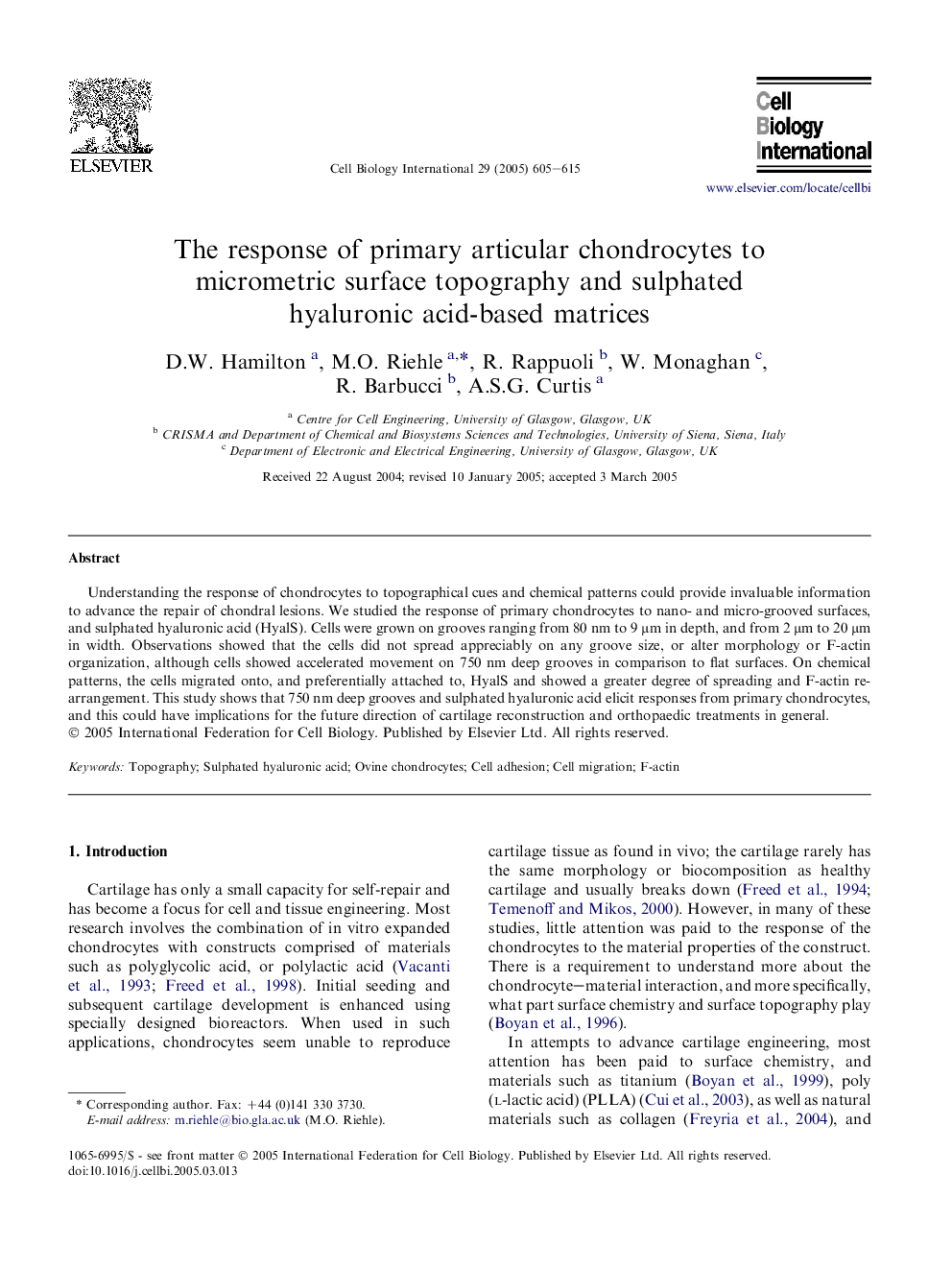| Article ID | Journal | Published Year | Pages | File Type |
|---|---|---|---|---|
| 10881799 | Cell Biology International | 2005 | 11 Pages |
Abstract
Understanding the response of chondrocytes to topographical cues and chemical patterns could provide invaluable information to advance the repair of chondral lesions. We studied the response of primary chondrocytes to nano- and micro-grooved surfaces, and sulphated hyaluronic acid (HyalS). Cells were grown on grooves ranging from 80 nm to 9 μm in depth, and from 2 μm to 20 μm in width. Observations showed that the cells did not spread appreciably on any groove size, or alter morphology or F-actin organization, although cells showed accelerated movement on 750 nm deep grooves in comparison to flat surfaces. On chemical patterns, the cells migrated onto, and preferentially attached to, HyalS and showed a greater degree of spreading and F-actin re-arrangement. This study shows that 750 nm deep grooves and sulphated hyaluronic acid elicit responses from primary chondrocytes, and this could have implications for the future direction of cartilage reconstruction and orthopaedic treatments in general.
Related Topics
Life Sciences
Biochemistry, Genetics and Molecular Biology
Biophysics
Authors
D.W. Hamilton, M.O. Riehle, R. Rappuoli, W. Monaghan, R. Barbucci, A.S.G. Curtis,
